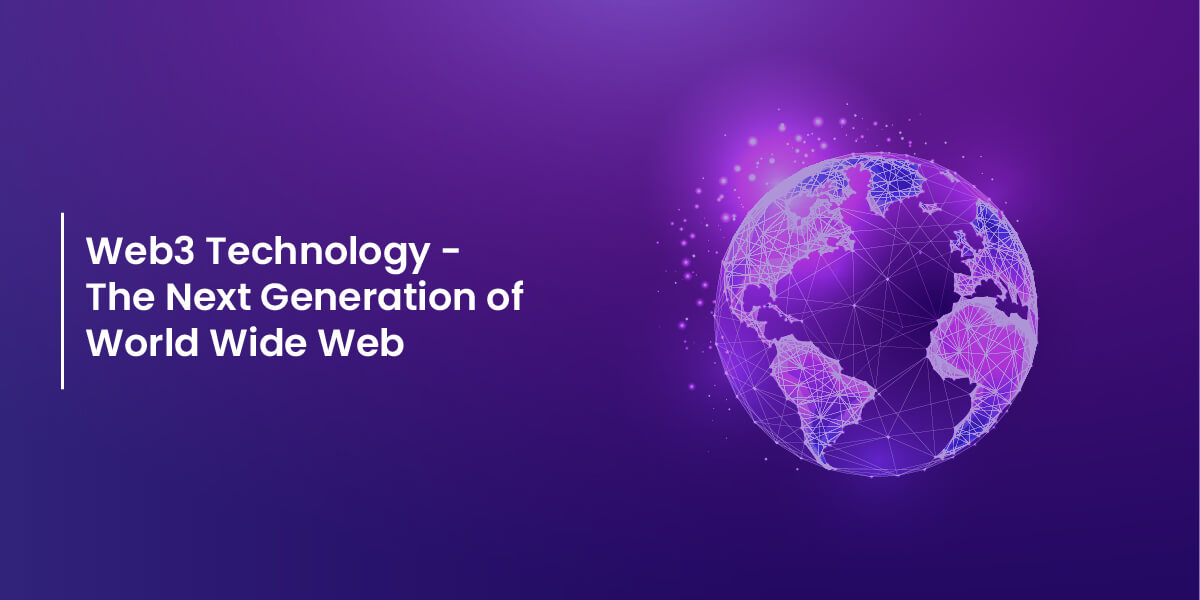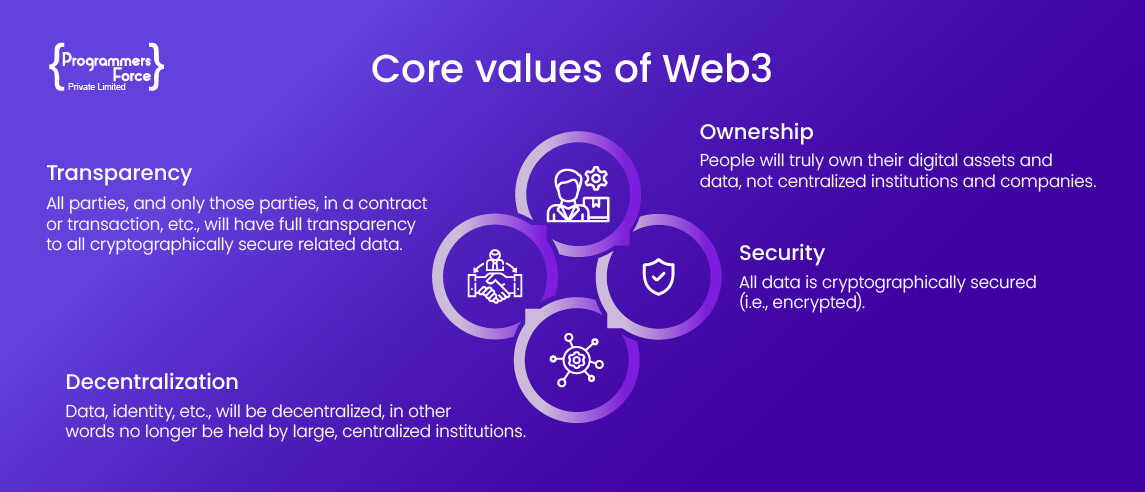
Web3 Technology – The Next Generation of World Wide Web
Web3 is the next iteration of the world wide web, or the internet simply. It is the new and improved version which has the potential to disrupt and usher in a significant paradigm shift as the previous iteration of the internet, Web 2.0 did. To explain better, Web 2.0 came with a new and advanced internet that allowed users to interact with the web dynamically rather than just seeing text on the screen from the initial Web 1.0. Now as data privacy becomes a global issue, people are looking for more decentralised solutions across networks. And Thankfully Web 3.0 claims to bring just that, giving the power of data governance to the end user.
Is Web 3.0 Live?
Many applications out there claim to be built on the Web3 architecture, as the statistics show about 48% of the finance applications market using the name web3 apps. But the fact is that Web3 is still out as the creation of a fully decentralised blockchain network that is uniform for everyone is still under development.
The Evolution of World Wide Web
Tim Berners-Lee, the name behind the invention of the World Wide Web (WWW) also sees Web3 as an innovative technology that will lay down a semantic web, which will be self-sufficient and open. AI and machine learning will play a crucial role to interpret content over the network conceptually and contextually. Here is a brief history of the Web. Starting from all the way back in 1989, when the World Wide Web was invented.
Web 1.0
The very first version of the internet also known as Web1.0 was considered the most reliable internet in the 1990s. Despite this, it only provided limited information and little to no user interaction. Web 1.0 allowed users to see content in the form of traditional texts and there was no such thing as user pages. Consumers had a difficult time locating all the valuable information using Web1.0 since there was no backend processing to analyse static websites.
Web 2.0
Web2.0 arrived in 1999, completely changing how users interact with the internet. This iteration introduced crucial developments in the web infrastructure with revolutionary technologies such as HTML, CSS and most importantly, the web powerhouse, JavaScript! Web 2.0 made the internet much more interactive and people started to spend more and more time, especially after the entry of Facebook in 2004. Now people can use social networks and create content on the web which can be distributed and shared.
Web 3.0 Concept Explained
Web3 technology promises great revolutions upon its arrival. It will utilise blockchain technology to set up its communication protocols between the users. And this is the reason users could communicate by becoming part of a DAO (Decentralised Autonomous Organisation). Web3 technology is anticipated to be open source across content platforms. Trustless technology as no one will depend on other entities, creates next-level network protection. Web3 technology will make up a distributed connection between users, services, and devices without any approval from a centralised authority.

Four Important Layers of Web3 Technology
Web3 technology is propelled by four new layers of technological innovation.
Edge Computing
While web2.0 has changed the current workflow of data centres, web3.0 will push it further down the line with the introduction of edge computing. Edge computing is a distributed computing paradigm that includes processing data at or near the network’s edge, closer to the data’s source. Data is often handled in centralised data centres in conventional cloud computing, which can result in latency, bandwidth limits, and security problems.
Edge computing solves these concerns by bringing data processing closer to the source, such as on IoT devices, sensors, or local servers, which can enhance data processing speed and minimise the quantity of data carried across the network. Edge computing can also improve privacy and security by eliminating the need to send sensitive data to distant data centres.
Decentralised Networks
Decentralisation is the main highlight of Web3 development. It is the concept in which the network servers are not under the governance of a centralised body, for instance, social media networks are under central bodies such as Meta. In web3 these servers are instead dispersed among a network of nodes or computers, each contributing to data storage and processing.
AI and ML Powered
AI (Artificial Intelligence) and ML (Machine Learning) have the potential to fuel Web3 in a variety of ways. Here are a couple of such examples, starting with Analytics for prediction. Web3 platforms can analyse massive quantities of data and generate predictions about user behaviour, market trends, and other things that may affect the platform with the use of AI and ML. This can assist platform operators in making more informed decisions and taking proactive measures to address potential issues. Smart Contracts are also a major highlight of AI implementation in Web3. These technologies may be used to create smart contracts that are more adaptable and versatile. Using data analytics and machine learning algorithms, these smart contracts can alter their behaviour based on changing market conditions or user preferences.
Blockchain Protocols
Blockchain protocols are the basic rules and processes that govern the operation of a blockchain network. Multiple blockchain protocols are used to power various decentralised apps in the context of Web3, which refers to the future version of the World Wide Web that is being developed on decentralised technologies like blockchain. Two major examples of these protocols cover Bitcoin and Ethereum.
Bitcoin or BTC is the original and best-known blockchain protocol, it mainly acts as a peer-to-peer electronic currency system. Ethereum on the other hand is a blockchain system that allows smart contracts and decentralised apps to be created (DApps).
Key Takeaways
Web3 technologies will completely transform the world wide web’s current dynamics and working structure with blockchain technology playing a central role. It aims to bring a decentralised internet that will provide the end user with much more privacy and security. As there will be no central governing body in the web3 applications, users can control what they consume and how they consume without any worries about data leaks and theft. Web3 will impact almost every industry that utilises digital networks and will also play a crucial role in online fraud prevention and transaction security with a completely transparent financial system.






